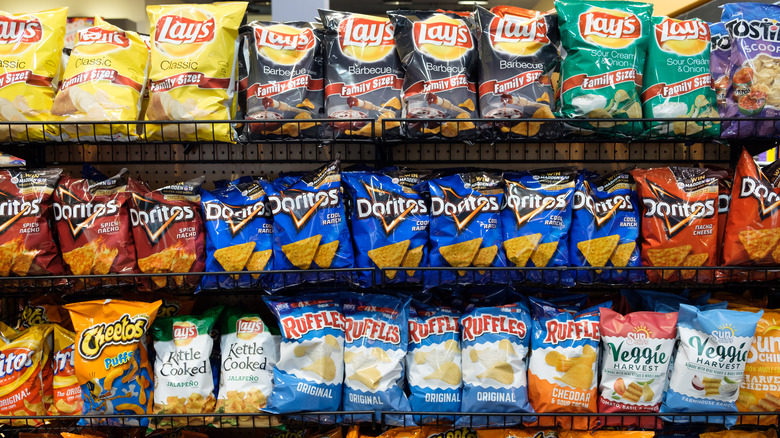When It Comes To Food, What Does 'Ultra-Processed' Really Mean?
Every month it seems like a new study gets added to the body of research that shows how bad processed and ultra-processed food really is for us. One week we hear processed foods can lead to cancer, the next that they can cause long-term cognitive decline. NBC reports that connections between a diet high in processed foods have repeatedly been linked to higher death rates, with associated health problems like high cholesterol, diabetes, and obesity. Worse yet, ultra-processed foods make up a significant amount of the American diet, with people getting around 57% of their daily calories from processed food on average, and for some high-risk groups, it's closer to 80%.
This would make avoiding most processed food seem like a health imperative, but the actual definition of "processed," is an ambiguous and squishy term to the layman. Food labels are rife with unclear terms (natural, organic, homemade, light), and that can be a huge complication when deciding what to actually limit in your diet. It has become increasingly common knowledge that things like added sugars are bad for us, but at what point does adding sugar to an item make it go from being natural to processed? As it happens, the presence of added sugar is actually a pretty good sign that the food is processed, though the "added" part is just as important as the sugar.
Ultra-processed, food are made largely from added ingredients
The definition of processed food can seem opaque, but a good guideline is how many ingredients have been added to something to change it from its natural state. According to Harvard Medical School, technically, any form of altering by adding extra ingredients is considered processing, so adding some salt to your fresh steak has "processed," it. The problem is when this goes too far — when the food has been ultra-processed. These kinds of foods have excessive amounts of added salt, fat, sugar, dyes, or preservatives that were not part of its natural state. The biggest tip-off that a food is highly processed is a long ingredient list on packaged food — where the added ingredients become a significant part of what you are consuming.
Some examples of minimally processed foods the Washington Post cites are cheeses, fresh bread, peanut butter, and pasta sauce, though even these can have their offenders. Food like this only has a few additives for flavor, texture, or shelf life. The list of common ultra-processed foods might be obvious, but it is a good point of comparison when making judgment calls.
Frozen meals, cold cuts, packaged snacks, and fast food all contain large amounts of preservatives, salt, sugar, and artificial colors, and these foods are the ones that are heavily tied to negative health outcomes. Processing can be hard to parse, but following the general guideline of more added ingredients can be helpful in identifying ultra-processed foods and learning what to avoid.

